Target panic is one of those topics sure to elicit a wide range of responses. Some people will perk to attention, while others will run like a little girl being chased by a spider. There are people who know it exists—usually because they suffer from it—and others who consider it a fairy tale. There are perhaps well-meaning folks who’ve never dealt with it but think they know how to fix it. Then you see people who’ve struggled with it for years, studied it, and are willing to pass on their experiences to help others. I’m a card-carrying member of the last group.
I’ve previously written in this magazine about my descent into target panic. For those interested, please read “Just A Click Away” in the Aug/Sept 2010 issue. For the sake of context, I’ll summarize how I got where I am today. At some point around 2002 I lost the ability to aim at whatever I wanted to hit. If I knew I wasn’t going to shoot the arrow, I could aim effortlessly. But if I knew I’d eventually drop the string, my bow arm would freeze to the right side of the target at full draw.
Eventually my shooting deteriorated to where I couldn’t reliably hit the kill zone of a deer target from 10 yards away. After trying unsuccessfully to control my target panic with every solution I could find, out of desperation I learned to shoot with a clicker—a little device designed to emit an audible click when you reach a certain draw length, signaling the archer to release the bowstring. Before long, my target panic disappeared, and archery became fun again.
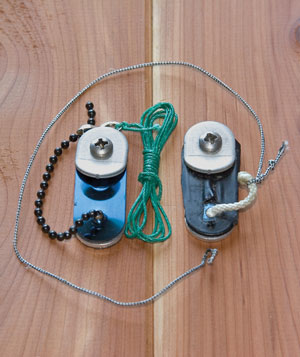
Replacing the chain with cord and wrapping the spring with vinyl tape makes it better suited for bowhunting.
Because I’ve been so vocal about the use of clickers to manage target panic, I receive a lot of questions on the topic. More than a decade of hindsight since I first employed a clicker has given me a little insight into things I did right and wrong. Hopefully, the rest of this article will prevent others from repeating my mistakes.
In most target panic situations, the mind has tried to shortcut the last step of the shot routine prior to release. For those who draw, anchor, aim, and then release, they experience target panic as freezing off target—an inability to aim. For those who aim during the draw, such as instinctive shooters, their shot routine is draw/aim, anchor, and release. With them, target panic manifests as an inability to get to anchor—freezing up with their string hand in front of their face or inability to hold at full draw. There are other types of target panic, but these two are by far the most common.
A clicker interjects a conscious action—expanding your draw until the clicker goes off—immediately prior to releasing the bowstring. It keeps the mind from shortcutting “aim” or “anchor” and going straight to release. Furthermore, by triggering the release with an audible click, it is nearly impossible for the mind to anticipate the release. This is exactly why Fred Leder invented the clicker in 1957, to control his own target panic by triggering his release with a sound he couldn’t anticipate. The clicker’s value with respect to maintaining a consistent draw length was secondary.
The first thing to understand is that a clicker isn’t a magic pill to cure your problems overnight. You’ll probably hate it before you love it. Prior to beginning, you’ll have to ask yourself how desperate you are to control your target panic. For me, using a clicker was literally the last resort before selling all my traditional archery equipment and finding a new hobby.
If you’ve decided to learn to use a clicker, you should probably consider hanging up your regular bows for a while. The proper use of a clicker will multiply the amount of energy it takes to shoot your bow, making your 50# bow feel more like 60#. You need to focus on your form and execution instead of fighting draw weight. I learned to use a clicker with my normal 56# hunting bow, and it thoroughly kicked my tail. I would have cut months off my learning curve by drawing no more than 30# until I learned the proper technique. Buy a cheap, secondhand lightweight bow and use it.
If you have grown accustomed to snap shooting, learning to use a clicker will require a substantial change on your part. Instead of simply touching anchor and releasing, you will reach anchor, hold, and then slightly increase your draw until the clicker goes off. For you, a clicker will radically change the way you shoot a bow, hopefully for the better.
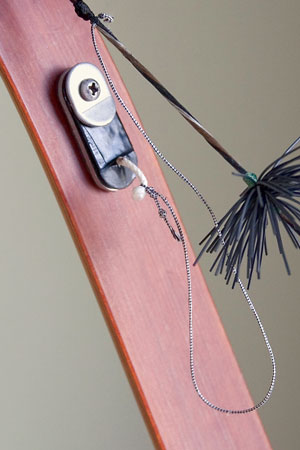
Mounting a clicker high on the upper limb allows for a short chord and less tangling.
The second thing you will need to do is forget about shooting at targets for a while. The best way to learn shooting with a clicker is up close at a large backstop with no target—a blank bale, for those of you familiar with that term. The backstop is only there to catch your arrows, nothing more.
When it comes to clickers, the two main choices for traditional archers are the Clickety-Click and the Krick-It. Both work the same way. They consist of a piece of flat spring steel attached to a base and connected to the bowstring by means of a cord. As the bowstring is drawn, the cord pulls on the end of the spring steel, bending it until it emits an audible click. The only real difference between these two models is that the Krick-It has a longer, lighter spring that feels much smoother during the draw. The shorter, heavier spring of the Clickety-Click can add a little draw weight to the bow, allowing you to feel it “load up.” Personally, I prefer the Krick-It because I want the click to be as much of a surprise as possible. If we can feel it load up we can anticipate it, and that’s not what we want.
Once you mount your clicker to your bow using the manufacturer’s instructions, you will need to set it to go off at your correct draw length. The reason I say “correct draw length” is because many people suffering from target panic end up drawing their bows substantially less than what is correct for proper form. If possible, have someone work with you to determine your correct draw length by watching your form and making sure you have proper alignment.
Once your clicker is set, you will draw to just a hair short of making the clicker go off and lock into your anchor. If you’re a conscious aimer, it’s at this point where you will aim your shot. If you’re an instinctive shooter you’re already aiming as you draw and anchor.
The last step is to expand until you hear the click, at which point you will release the bowstring. It is very important to note that you are not expanding by pulling through your anchor. If you do, accuracy will be very difficult. One time you may pull slightly upward, making the shot go low. The next time you may pull somewhat downward, sending the arrow high.
Your hand should stay locked into your anchor, with the expansion taking place within your upper body, ideally by using what’s referred to as back tension. The string hand shoulder blade will squeeze toward the spine, and the other will push toward the target. Done properly, your drawing elbow should move slightly sideways, as if it was going to swing behind your back.
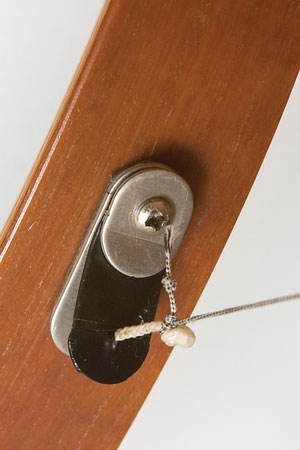
As you reach full draw, the spring bends until it breaks over with an audible click.
At first you will consciously listen for the click and force your string hand open. Eventually you will train your subconscious mind to automatically release when it hears the click. This is when things will come together and using the clicker will feel comfortable. Now you can slowly work back up to your normal bow weight while still using the clicker.
Once you get proficient with the clicker, you’ll find you only release on the click when your shot is lined up properly. I refer to this as giving the subconscious mind a red light / green light. When I shoot with a clicker, I set my aim and begin the final expansion. If the tip of my arrow is where it belongs when I hear the click, my subconscious releases the string. If the tip of my arrow has drifted off its proper aim and I hear the click, I either let down and restart my shot, or collapse slightly to re-engage the clicker and start my final expansion over again. At this point your target panic should be well under control.
Many people who’ve suffered target panic describe it as one of the most frustrating things they’ve ever endured. As a result, many of them leave archery altogether. If you’re at that point, consider giving a clicker a try. If you’re like a lot of people, it may be just the thing to make archery fun again.





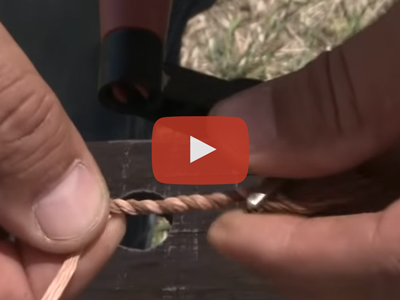
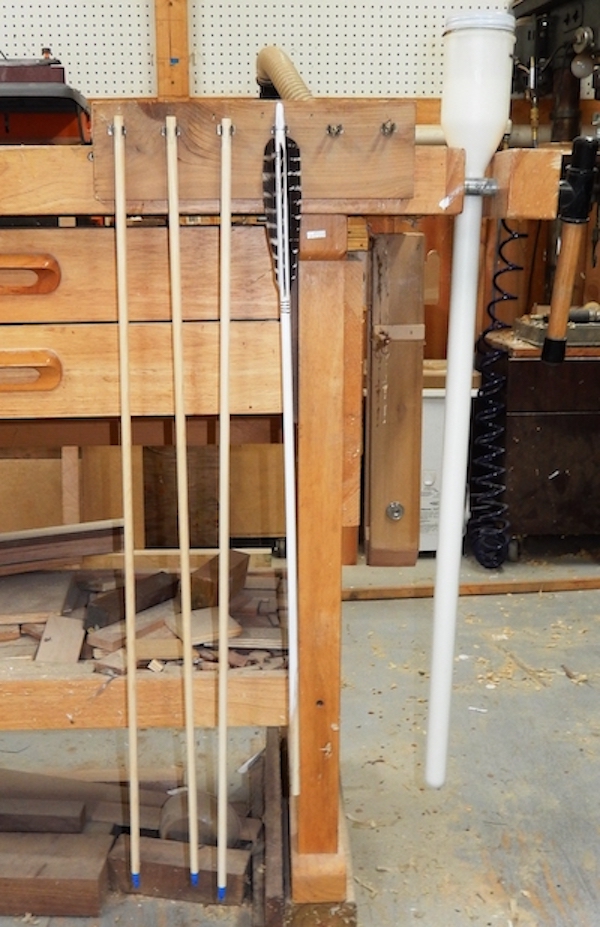
Leave A Comment